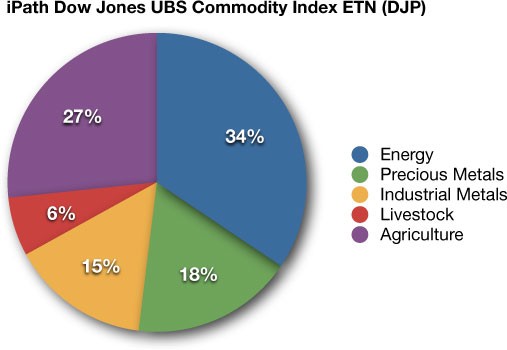Guide to ETF Index Weightings
Post on: 12 Июнь, 2015 No Comment

ETFs have enjoyed a tremendous surge in popularity in part because they allow investors to gain exposure to a broad (or narrow) market index in a timely and cost efficient manner. When implementing their investment strategy through construction of an ETF portfolio (or when using ETFs to round out a portfolio), investors have the option to choose from dozens of equity indices. as well as numerous commodity and fixed income benchmarks. While the underlying constituents of each index obviously vary from index to index, the manner in which returns are calculated and individual stocks are weighted can also be quite different. Heres a quick guide to understanding the various weighting methodologies applied to most market indices.
Price-Weighted Index
In a price-weighted index, each component stock makes up a fraction of the index proportional to its trading price. Think of a price-weighted index as if it holds one share of each of the constituent companies. There are several drawbacks of a price-weighted index. First, absolute stock prices are somewhat arbitrary, since then can be influenced through stock splits and dividend payouts. Second, development of a price-weighted index wont accurately reflect changes in the market values of the constituents, since stock trading at $100 will make up 10 times more of the index than a stock trading at $10, regardless of the total market capitalizations of the company. Finally, price-weighted indices need to be constantly rebalanced to reflect changes in stock prices.
Consider a hypothetical price-weighted index consisting of ten stocks: Berkshire Hathaway, IBM, Microsoft, Wal-Mart, Pfizer, GE, Google, Boeing, Exxon Mobil, and Intel (with the exception of GOOG and BRK-A, all of these are current components of the Dow Jones Industrial Average Index). Berkshire would account for more than 99% of the total index weighting, due to the fact that its share price is significantly higher than any other stock in the index.
The Dow Jones Industrial Average (tracked by DIA ), perhaps the most widely reported market index in the world, is an example of a price-weighted index.
Market Capitalization-Weighted Index
In a market capitalization-weighted index, each component stock is weighted according to its market capitalization (i.e. trading price multiplied by number of shares outstanding). Think of a market capitalization-weighted index as if it holds all outstanding shares of each constituent company. If we were to implement a market capitalization weighting methodology to the same index presented above, we can see that the weightings to each company would be dramatically different.
Many market capitalization-weighted indices are now float adjusted, meaning the number of shares used in the calculation of the weighting is is adjusted to include only publicly-floated shares (i.e. excludes shares held by insiders, large holders (generally more than 5%), and restricted shares).
Examples of market capitalization-weighted indices include the S&P 500 (tracked by SPY. IVV. IVW. IVE ), NASDAQ 100 (QQQQ ), Hang Seng (Hong Kong ), Russell Indices (IWV. IWF. IWD ), IBEX 35 (Spain ), and the NYSE Composite Index.
Equal-Weighted Index
Think of an equal-weighted index as if it holds an equal dollar amount (say $1,000) in each of the component companies. The S&P 500 Equal Weight Index (EWI) holds the same stocks as the traditional S&P 500, but assigns a weight of 0.20% to each. An issue with equal-weighted indices is the frequency of rebalancing. As stock prices change, the weightings will move away from an equivalent level, but if the index rebalances too frequently, it becomes impractical for funds to track the index in a cost-efficient manner. So the rebalancing frequency must strike a balance between representation and investability. The S&P 500 EWI rebalances its constituents to 0.20% on a quarterly basis.
Fundamentally Based Index
Heres where things get a little unconventional. In fundamentally based indices, stocks are weighted based on one or many fundamental factors, such as book value, revenue, EPS, number of employees, etc. This sounds a bit bizarre, but the logic behind such an index is quite interesting. Traditional market capitalization-weighted indices, by nature, overweight overvalued stocks and underweight undervalued stocks. Equal-weighted indices avoid these problems, but are susceptible to high turnover and volatility (as discussed above). Fundamentally based indices remove the systematic inefficiencies of a capitalization-weighted system while avoiding drawbacks of simple equal-weighted indices.














